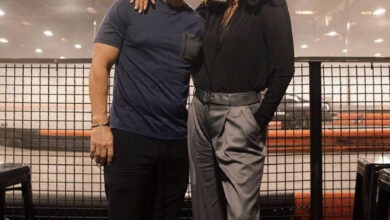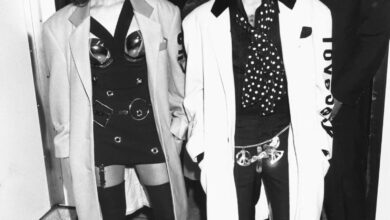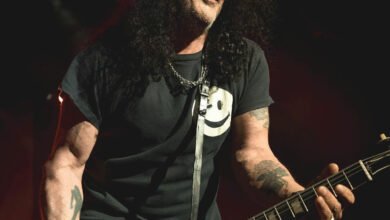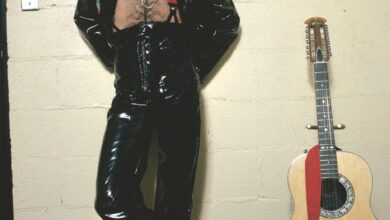38 Years Later: The Hidden Easter Eggs in Top Gun You Probably Missed!
OPINION: This article may contain commentary which reflects the author's opinion.
It’s been nearly four decades since Top Gun hit theaters, but even after all this time, the iconic film continues to thrill new and old fans alike. Known for its adrenaline-pumping aerial dogfights and heart-pounding drama, Top Gun made Tom Cruise a global star and forever defined the “need for speed.” But did you know the film is packed with hidden details and Easter eggs that even the most dedicated fans may have missed? Let’s dive into some of these mind-blowing secrets that have remained hidden in plain sight for 38 years.
1. The Call Signs Aren’t Random
While Maverick, Goose, Iceman, and Viper are unforgettable call signs, they aren’t just quirky nicknames. Each call sign has a deeper meaning that reflects the character’s personality. For example, Maverick, played by Tom Cruise, is a lone wolf who often goes against the rules—hence the name “Maverick.” Iceman, portrayed by Val Kilmer, is the cool, calculated pilot who’s unshaken by pressure, while Goose’s (Anthony Edwards) call sign represents his loyalty and humorous, grounded personality.
2. Tom Cruise’s Authentic Flight Scenes
Tom Cruise is known for performing his own stunts, but you might be surprised to learn just how deep his dedication went in Top Gun. In several scenes, Cruise is actually flying an F-14 Tomcat for real. While most flight sequences involve military pilots, the production team went to great lengths to ensure that Cruise experienced some real in-flight maneuvers. Keep in mind, this was long before the CGI technology we see today—what you’re watching is raw, authentic flight footage.
3. The Famous ‘Inverted Dive’ Was Inspired by a Real Event
One of the film’s most iconic scenes is when Maverick performs an “inverted dive” over a Russian MiG, giving the enemy pilot the finger. While it seems like a wild Hollywood invention, the move was inspired by real-life events. In the 1960s, U.S. Navy pilots reportedly engaged in similar stunts during Cold War encounters with Soviet aircraft. The film took creative liberties, but the idea itself wasn’t pure fiction.
4. The Jukebox Song Selection Wasn’t Accidental
Remember when Top Gun’s jukebox scene played You’ve Lost That Lovin’ Feelin’ by The Righteous Brothers? It wasn’t just a random musical choice. The song perfectly underscores the budding romance between Maverick and Charlie (Kelly McGillis), evoking a sense of nostalgia and emotional connection. Moreover, The Righteous Brothers themselves had close ties with the military, having performed at numerous armed forces events, making the song a subtle nod to the Navy’s long-standing cultural influence.
5. Hidden Tribute to Fallen Pilots
If you blink, you’ll miss this heartwarming Easter egg. During the opening credits, the text “This film is dedicated to the pilots of the Navy’s Fighter Weapons School” appears briefly on the screen. It’s a touching tribute to those who have given their lives in service, adding a layer of real-world gravity to the fictional dogfights portrayed in the movie.
6. Viper’s Connection to Real Navy History
Commander Mike “Viper” Metcalf (Tom Skerritt) isn’t just a tough mentor in the film; his character is loosely based on a real U.S. Navy pilot. In particular, Viper’s background shares elements with Rear Admiral Dan Pedersen, the actual founder of the Navy Fighter Weapons School—more commonly known as TOPGUN. The character’s knowledge, discipline, and occasional harshness echo Pedersen’s real-life persona as the legendary instructor who shaped the program that defined generations of elite pilots.
7. Charlie’s Real-Life Counterpart
Charlie Blackwood, Maverick’s love interest, isn’t just a fictional character. She’s based on Christine Fox, a former civilian employee at the Naval Air Station Miramar who worked as a mathematician and specialized in tactical air planning. Fox eventually became the highest-ranking female civilian at the Pentagon. The writers integrated her expertise and confidence into the character of Charlie, adding authenticity to the role and representing women’s vital contributions to military operations.
8. The Realism of Iceman’s Cough
One of the seemingly small, easily overlooked moments involves Iceman’s subtle cough during one of the locker room confrontations. While it appears to be an improvisation from Val Kilmer, it’s actually a nod to the high-G forces fighter pilots experience in flight, which can leave them physically taxed and occasionally short of breath. It’s a tiny but realistic detail that adds to the authenticity of these pilots’ on-screen performances.
9. The MiG-28? It Doesn’t Exist!
Throughout the movie, the enemy aircraft is referred to as a MiG-28. But guess what? The MiG-28 is entirely fictional! Real Soviet aircraft of that era were part of the MiG series, but they were never labeled as “28.” The actual plane used in the film was a Northrop F-5, cleverly painted to stand in as the Soviet MiG.
10. Maverick’s Jacket Is a Tribute to Military History
The patches on Maverick’s iconic bomber jacket are more than just cool fashion statements. They include emblems from various military tours, such as the Far East Cruise and the USS Galveston, both referencing real-life naval deployments. One patch even includes a nod to the historic Taiwan Strait patrols, adding depth to Maverick’s character as a seasoned Navy officer.
Top Gun remains a pop culture juggernaut, and even after 38 years, fans are still discovering hidden gems scattered throughout the film. Whether it’s Maverick’s rebellious streak or the incredible flight sequences, these Easter eggs enhance the film’s legacy. Now, the next time you watch Top Gun, you can catch these details and impress your friends with your insider knowledge!



